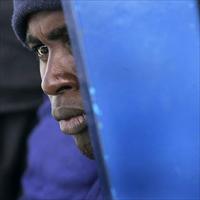SENEGAL: The “missing middle” – tackling youth unemployment

Ibra Niang, 22, was recently one of the estimated 100,000 young people who enter Senegal’s stark job market each year. After seeing many of his fellow youths end up on the streets hawking used clothing or on a rickety boat headed clandestinely to Europe, Niang decided he needed a marketable skill if he was to gain a decent wage.
Under a new project to restore historic buildings in Saint-Louis, 266km north of the capital Dakar, Niang is one of at least 300 young people receiving professional training, which sponsors hope will make the youths employable for years to come.
The project promises long-term benefits for participating youths and the surrounding community but is costly, highlighting the question of how to tackle youth unemployment in a way that governments and other local institutions in cash-strapped West Africa can maintain.
The project, funded by the Spanish Development Corporation, could be a model in Senegal but only if the government invests more in such efforts, said Gora Gueye, director of the Saint-Louis ‘school-workshops’. Senegal’s youth unemployment rate is 30 percent.
"The project could be a good model for an active youth employment policy in Senegal but the government will have to show a much greater commitment and ownership of the process,” Gueye told IRIN.
The Spanish Development Cooperation is funding the US$4-million project over 18 months, with a small contribution from Senegal’s Ministry of Culture and Heritage. The project costs on average $3,800 per youth.
Carlos Gallego, project manager at the Spanish Development Cooperation, said that the project should not be measured only by how many jobs it creates.
“The school-workshops have many different effects, one of which is job creation. We should also take into account the revitalisation of social and economic activities in the town or region.”
Qualifications
The project workshops provide training in agri-business, tourism, community development, urban regeneration and historic building renovation.
When Niang left school two years ago, he was blocked by a lack of professional qualifications.
“I did not even look for work because…without qualifications you can do only unskilled labour and [such workers] do not make enough money to live.”
Niang is now studying masonry and hopes his new skills will lead to employment back in his village, 250km north of Saint-Louis.
“After this, I will return to my village and help develop it. It is a young district, so there will be a lot of building work to be done, like hospitals and schools, the administrative building, for example.”
Gueye said the project’s emphasis on practical training, where 70 percent of teaching consists of students actively working in their trade, is a new way to approach Senegal’s youth employment problem.
According to Gallego, this ‘learn by doing’ approach was adapted from a model used successfully in Latin America to tackle youth unemployment and decaying cultural heritage sites.
The missing middle
Mamadou Ndione, an economist at the World Bank in West Africa, said that to tackle unemployment Senegal must reinforce professional training. He sees Senegal’s unemployment problem as a pyramid missing its middle.
“At the top of the pyramid is a small group of highly qualified people and at the bottom we have a mass of people with few or no qualifications. In the middle, there is a big gap.”
Senegal has a large but unqualified workforce, which is linked to low levels of education and training, Ndione said. “If you look at the whole working population, almost half have no education whatsoever. This means that the level of training is extremely weak.”
Babou Faye, deputy director of the governmental National Agency for Youth Employment (ANEJ), said the agency has a clear mission but lacks the resources to do its job. ANEJ -- whose mission is to facilitate links between youths and employers -- has an annual budget of around $500,000 per year.
"If the [school-workshop] model works then we would like to multiply it elsewhere,” he said. “For example, we are aware of the need for employment in the mining area of Kédougou. We could apply this model there and train young people in the skills the mining sector needs. But the question of funding remains critical."
 Back and Next - Back and Next
Back and Next - Back and Next See Also - See Also
See Also - See Also